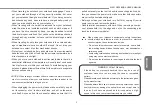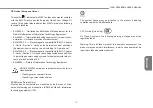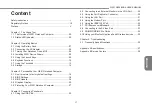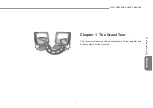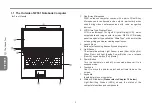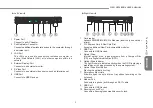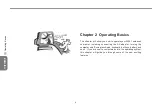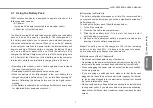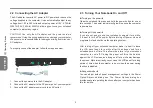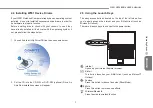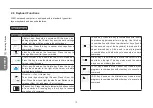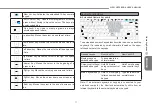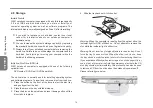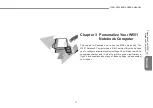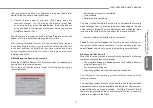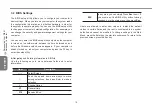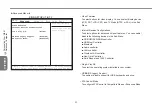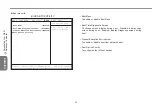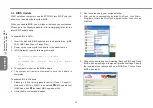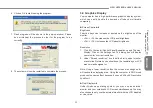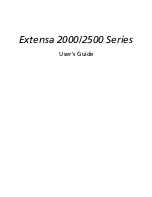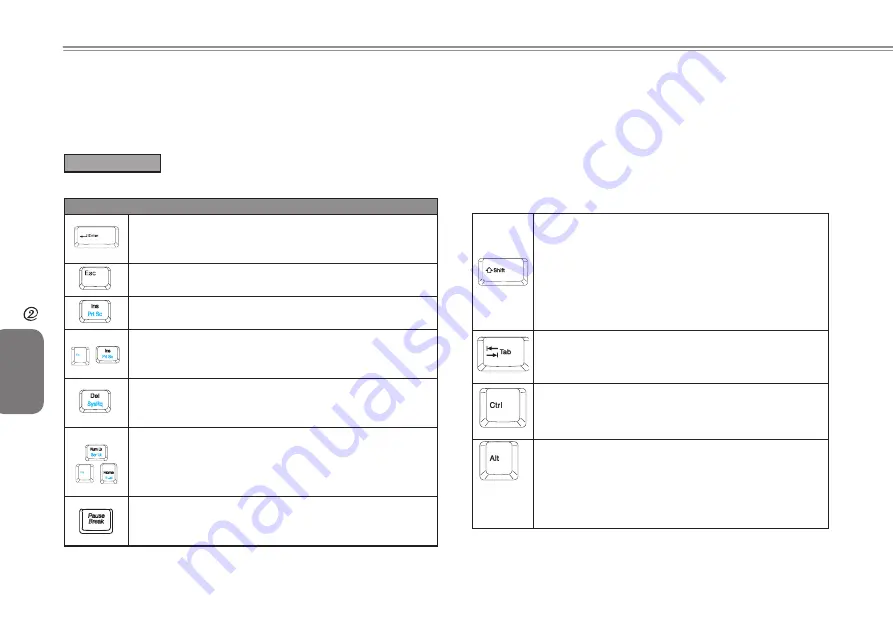
11
10
ENGLISH
11
10
2.6 Keyboad Functions
W551 notebook computer is equipped with a standard typewriter-
layout keyboard and has extra features.
Basic Keypad
Keypad Function Desription
<Enter> key. Execute a command. Within many text
editing programs, the <Enter> key inserts a hard carriage
return, just like what an ordinary typewriter does.
<Esc> key. Press this key to cancel or escape from a
command or function.
<Ins> key. Known as the Insert key. Press this key to
change from insert to type over mode.
+
<Fn>+<PrtSc> key. Known as the Print Screen key.
Press this key to map the whole screen to share memory
for your specific usage.
<Del> key. Known as the Delete key. Press this key to
delete the character to the right of the cursor, or delete
marked texts or items.
+
<Num Lk>, <Fn>+<Home> key.
To activate/ deactivate Light Sensor. Press <Num Lk>
first. When Num Lock light (beside Power Button) is on,
release <Num Lk> and press <Fn>+<Home>.
<Pause> key. Press this key to temporarily halt execution
of a command. Pressing any other keys to resume
execution of a command.
<Shift> key. Press this key in combination with letters
to produce uppercase letters in typing. Use this key
in combination with those two-character keys (found
on the second row of the keyboard) to produce the
upper marked keys. Also used in most programs
in combination with other keys to execute a certain
command.
<Tab> key. Press this key to move the cursor to the
next tab on the right. This key works much the same
way as on an ordinary typewriter.
<Ctrl> key. Known as the Control key. Used in most
programs in combination with other keys to execute a
command.
<Alt> key. Known as the Alternate key. Used in most
programs in combination with other keys to execute a
command.
Operating Basics

